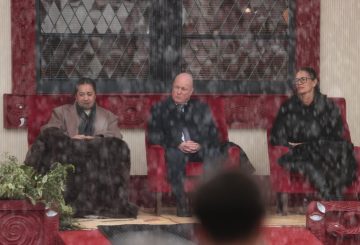녹색당 의원 티나우 투이오노는 1924년에서 1949년 사이에 서사모아에서 태어난 한 무리의 사람들에게 뉴질랜드 시민권을 회복시키는 것을 목표로 하는 법안을 제안했습니다.약 5000명으로 추정되는 이 단체는 1982년에 법에 의해 시민권이 박탈되었습니다.1982년 시민권 박탈에 의한 시민권 회복 (서사모아) 법안으로 알려진 이 법안은 ACT와 뉴질랜드 퍼스트 파티로부터 지지를 받았습니다.
투이오노는 이 법안이 공정성에 관한 것이라고 밝혔습니다.그는 이들 개인이 한때 뉴질랜드 시민으로 인정되었으나 법에 의해 시민권이 박탈되었다고 설명했습니다.그는 주정부가 이런 방식으로 시민권을 박탈하는 것은 부당하다고 생각합니다.
이 법안은 뉴질랜드 최초의 ACT 의원인 팜지트 파르마와 케이시 코스텔로가 정당들의 지지를 발표했을 때 야당과 대중의 박수를 받았습니다.이 법안은 찬성 74표, 반대 49표로 1차 심의를 통과했으며, 국민당이 유일하게 반대표를 던졌습니다.
이 법안은 이제 정부 행정부 선정 위원회에서 검토될 예정입니다.만약 이 법안이 노동당과 테파티마오리 정당의 지지만 받았다면 통과되지 않았을 것이다.하지만 ACT (ACT) 나 뉴질랜드 퍼스트 (New Zealand First) 의 추가 지지가 더해졌기 때문에 충분한 표를 얻었기 때문에 계속 진행하기에 충분하다.
이 법안은 시민권을 자동으로 부여하지는 않지만 신청을 할 수 있도록 허용합니다.노동당 부국장 카멜 세풀로니 (Carmel Sepuloni) 에 따르면, 이번 조치는 새벽에 일어난 습격에 대해 이전에 했던 사과를 기리기 위한 방안으로 여겨진다.녹색당은 또한 1948년이 되어서야 뉴질랜드 시민권이 확립되었으며, 그 이전에는 뉴질랜드인이 영국의 신민으로 간주되었다고 언급했습니다.



























































